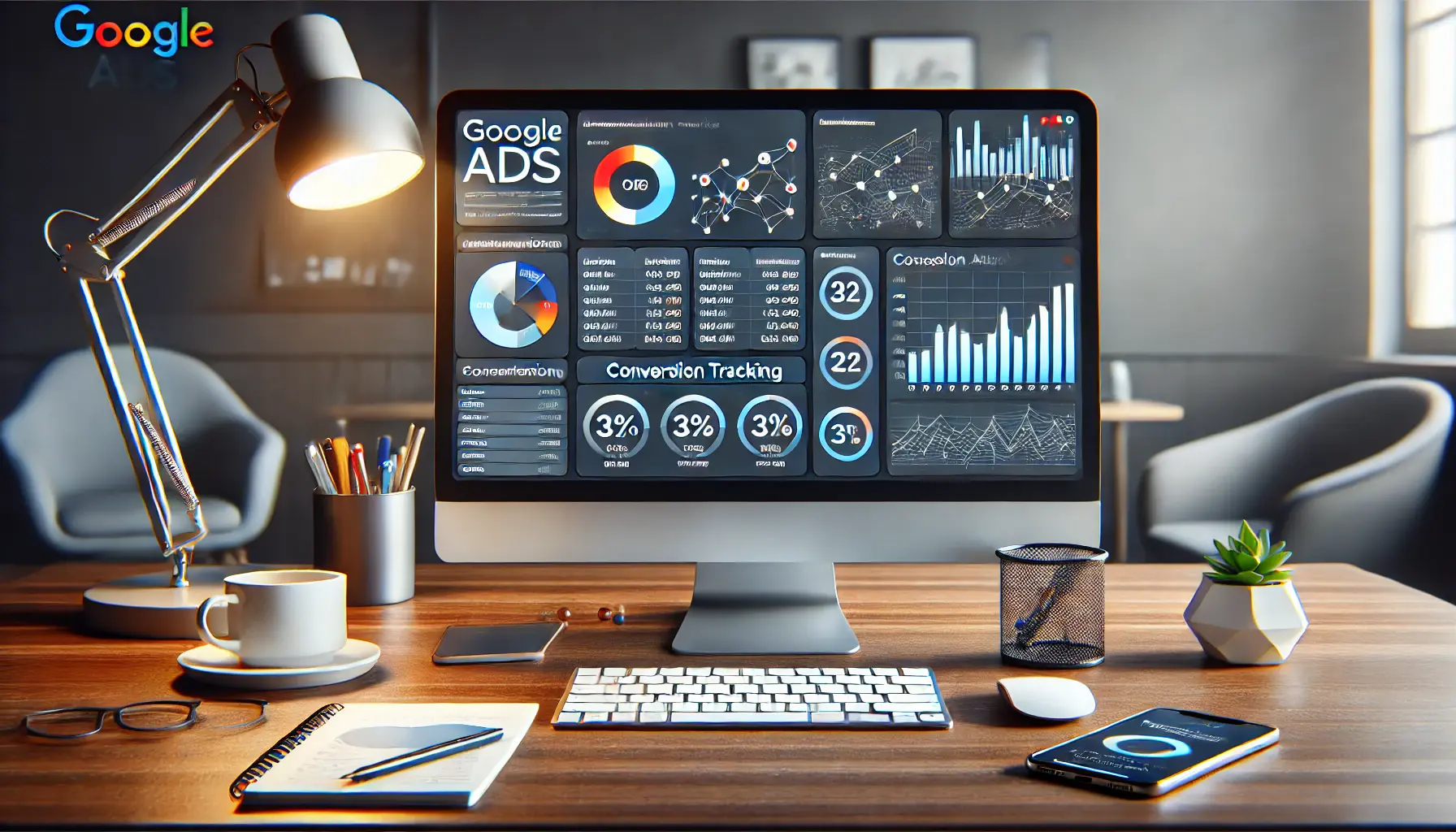In today’s age of social media, LinkedIn is an archetypal platform for professionals from all over the world.
With over 1 billion users projected in 2025, it offers exclusive opportunities to network, secure a job, and establish a brand.
In order to tap into the potential of LinkedIn advertising, it is important to examine data-driven insights that can steer your campaigns.
- Understanding LinkedIn’s Special Crowd
- Optimizing Ad Formats to Maximize Engagement
- Leveraging LinkedIn’s Performance Analytics
- Leveraging LinkedIn’s Matched Audiences for Targeted Advertisements
- How to Integrate LinkedIn Ads into a Multichannel Marketing Strategy
- Succeeding with Data-Driven Insights for LinkedIn Ads
- Frequently Asked Questions About Data-Driven Insights for LinkedIn Ads
Understanding LinkedIn’s Special Crowd
In the process of crafting effective LinkedIn advertisements, it is important to understand the platform’s user base.
The user base of LinkedIn is distinct, with specific demographics and professional interests that set it apart from other social media sites.
Using data-driven insights, advertisers can fine-tune their approach to maximize engagement and conversionsThe desired actions taken by users after interacting with an ad, such as form submissions or purchases..
Demographics and Professional Interests
The demographics of LinkedIn clearly reflect its professional profile:
- Age Group: Approximately 60% of users are in the age bracket of 25-34 years, comprised of both Millennials and younger professionals. This group is highly active, interested in professional growth, and keen on expanding their professional networks.
- Gender Distribution: As of January 2025, males constitute approximately 56.4% of users, while females make up 43.6%. This near parity indicates the platform’s widespread appeal across genders.
- Global Reach: Over 75% of LinkedIn members reside outside the U.S., demonstrating its robust international presence and making it a prime choice for global advertising campaigns.
Occupationally, LinkedIn is used across a broad variety of industries:
- Industry Diversity: The platform contains professionals employed in sectors such as technology, finance, healthcare, education, and more, presenting B2B marketing with an extremely diverse platform.
- Job Functions: Users range from entry-level employees to C-suite executives, allowing advertisers to target specific roles and levels of seniority effectively.
User Behavior Patterns on LinkedIn
Understanding how users act on LinkedIn can significantly influence your advertising strategy.
Utilizing data-driven insights helps in crafting campaigns that align with user behavior patterns.
- Content Engagement: Users actively interact with content that offers professional utility, such as industry news, thought leadership articles, and career development resources.
- Networking Activities: Apart from job searching, most users utilize LinkedIn to establish professional networks, connect with industry groups, and follow companies of interest.
- Platform Usage: Users tend to visit LinkedIn during workdays, aligning with standard business hours. This is significant when scheduling your ads to maximize visibility and engagement.
By targeting your advertising efforts to these demographics and behavioral statistics using data-driven insights, you can create more efficient and targeted LinkedIn advertising campaigns.
Keep in mind that a data-driven strategy is the key to achieving the full potential of the platform.
Understanding LinkedIn’s unique user base is crucial for crafting highly targeted and effective advertising campaigns.
Optimizing Ad Formats to Maximize Engagement
Choosing the right ad format is critical to connecting your LinkedIn ad campaigns with your target audience.
Leveraging data-driven insights has the potential to significantly increase engagement and achieve desired outcomes.
Choosing the Right Ad Type for Your Campaign
LinkedIn offers various ad formats, each best suited for specific campaign objectives:
- Sponsored Content: This native ad appears directly within users’ feeds and can feature single images, videos, or carousels. It works best for promoting articles, videos, or events to boost brand awareness and engagement.
- Sponsored Messaging: Delivered directly to users’ LinkedIn inboxes, this format is ideal for personalized promotions or event invites. It creates a direct communication channel with potential leads.
- Text Ads: Simple yet effective, these ads appear on the right sidebar with a brief headline, description, and optional image. They are a cost-effective option for driving traffic to your website or landing pages.
- Dynamic Ads: Personalized based on user data, these ads change content dynamically to improve relevance and interaction. They are effective for building brand affinity and persuading followers.
Selecting the appropriate ad format should align with your campaign goals and audience preferences.
Utilizing data-driven insights can help determine which formats yield the most favorable results for your specific objectives.
Crafting Effective Ad Copy and Images
Once you’ve selected the optimal ad format, crafting compelling content is essential:
- Ad Copy: Keep your messaging concise and impactful. Highlight the value proposition of your product or service and include a clear call-to-action (CTA) to guide users on the next steps.
- Visuals: Use high-quality images or videos that resonate with your audience. Ensure visuals are relevant to your message and adhere to LinkedIn’s recommended specifications for optimal display.
Integrating data-driven insights into your creative process can make a huge difference in the performance of your ads.
By analyzing historical performance metrics and audience engagement data, you can optimize your content to better address the expectations and interests of your target audience, leading to greater engagement and campaign success.
Choosing the right LinkedIn ad format can significantly impact your engagement rates and overall campaign performance.
Leveraging LinkedIn’s Performance Analytics
To truly excel with your LinkedIn ad campaigns, it’s important to tap into the power of LinkedIn’s analytics.
By diving deep into data-driven insights, you can enhance your strategies, optimize performance, and accomplish your marketing objectives more effectively.
Key Metrics to Monitor
Understanding and tracking the right metrics is at the heart of any data-driven strategy.
Some of the most important metrics you should monitor regularly include:
- Impressions: This metric indicates how often your ads are displayed to users. Higher impressions may signal increased brand visibility. However, they should be cross-checked with engagement metrics to determine if your ads are truly resonating with your audience.
- Clicks and Click-Through Rate (CTR): The ratio of clicks to impressions determines the CTR. A higher CTR typically indicates well-optimized ad content and precise targeting.
- Conversions: This tracks how many desired actions—such as form submissions or resource downloads—users complete as a direct result of your ad. Monitoring conversions helps measure whether your campaigns are effectively driving user engagement.
- Cost Per Click (CPC): This metric reflects the average amount spent per click on your ad. Tracking CPC is crucial for budget planning and evaluating cost-effectiveness.
- Cost Per Conversion: This represents the average amount spent to generate a conversion, offering key insights into your campaign’s return on investment (ROI).
Regularly tracking these metrics allows you to make informed decisions, refine your strategies, and ensure your campaigns align with your business goals.
Utilizing Data-Driven Attribution Models
Attribution models play a crucial role in identifying which touchpointsThe various interactions a customer has with a brand before making a purchase or taking an action. in the customer journey contribute the most to conversions.
LinkedIn has improved its ad attribution process by incorporating data-driven methods to provide more accurate insights.
Traditional attribution models, such as first-touch or last-touch, assign all credit to a single interaction.
In contrast, data-driven attribution evaluates every touchpoint—whether a display ad, video, or search interaction—to distribute credit more accurately.
This approach offers a more realistic view of how different marketing efforts influence conversions.
By applying data-driven attribution models, you can:
- Find High-Impact Touchpoints: Identify the interactions that play the most crucial roles in driving conversions and optimize accordingly.
- Optimize Budget Spend: Allocate resources strategically by investing in the channels and tactics that deliver the most value.
- Enhance Campaign Strategies: Gain a clearer understanding of the customer journey and refine your approach for better engagement and higher conversion rates.
Implementing data-driven insights and attribution models requires a solid understanding of analytics and a commitment to continuous learning.
However, the benefits—more effective marketing efforts and improved ROI—make it a worthwhile investment.
Incorporating LinkedIn’s advanced analytics and attribution models into your advertising strategy empowers you to make data-backed decisions, enhance performance, and achieve superior marketing outcomes.
Regularly tracking key LinkedIn ad metrics allows for continuous improvement and optimized ad spend.
Leveraging LinkedIn’s Matched Audiences for Targeted Advertisements
In order to maximize the power of your LinkedIn ad campaigns, using Matched AudiencesA LinkedIn feature that allows advertisers to retarget users using custom audience lists. is crucial.
Through this feature, you can craft bespoke audiences using your first-party dataData collected directly from users by a company, such as customer emails or website interactions. and merging it with LinkedIn’s professional intelligence, leading to more accurate and effective targeting.
Learning About Matched Audiences
LinkedIn’s Matched Audiences include several advanced targeting approaches:
- Contact Targeting: Upload a list of email addresses to reach out to specific contacts, such as existing customers or leads. This ensures your ads target people who already have exposure to your brand.
- Company Targeting: Target specific businesses by uploading a list of company names, enabling Account-Based Marketing (ABM) campaigns.
- Website Retargeting: Reconnect with visitors who have already interacted with your website through tailored ads, encouraging them to return and take desired actions.
By implementing these strategies, you can reconnect with individuals who have shown interest in what you’re offering, increasing the likelihood of conversions.
Best Practices for Effective Retargeting
To get the most out of LinkedIn’s retargeting feature, follow these best practices:
- Set Clear Objectives: Establish specific goals for your retargeting campaigns, such as increasing event registrations or improving content downloads, to guide your approach effectively.
- Segment Your Audience: Categorize your website visitors based on their behavior and engagement levels to deliver targeted ad content that appeals to each segment.
- Use Various Ad Types: Utilize a combination of ad formats, including single-image ads, video ads, and carousel ads, to keep users engaged and cater to different user preferences.
- Track Frequency: Be mindful of ad frequency to prevent audience fatigue. Optimize your settings to ensure your ads are seen enough to be effective but not so frequently that they become intrusive.
- Rotate Ad Content Regularly: Refresh your ad creatives periodically to keep campaigns fresh and engaging, maintaining audience interest over time.
By combining data-driven insights with these best practices, you can maximize your LinkedIn ad campaigns, making them both targeted and effective.
Matched Audiences provide a powerful way to retarget engaged users and nurture them towards conversion.
How to Integrate LinkedIn Ads into a Multichannel Marketing Strategy
In today’s digital era, a multichannel marketingA strategy that integrates multiple marketing channels to reach customers effectively. strategy is key to engaging and interacting with your target audience across multiple platforms.
Adding LinkedIn Ads to this approach can significantly enhance your campaigns, especially when selling to B2B audiences.
By leveraging data-driven insights, you can create a unified and effective marketing strategy to maximize your reach and influence.
The Role of LinkedIn in Multichannel Marketing
LinkedIn plays a crucial role in a multichannel marketing strategy, particularly for B2B marketers.
With over one billion professionals globally, LinkedIn provides unmatched access to decision-makers and industry influencers.
Incorporating LinkedIn Ads into your marketing mix allows you to:
- Target a Professional Audience: LinkedIn’s user base consists of professionals across various industries, making it an ideal platform for B2B marketing campaigns.
- Enhance Account-Based Marketing (ABM): LinkedIn’s advanced targeting capabilities enable precise engagement with specific accounts, perfectly aligning with ABM strategies.
- Ensure Consistent Messaging: LinkedIn Ads help maintain uniform brand messaging across multiple channels, strengthening brand awareness and trust.
Strategies for Successful Integration
To successfully integrate LinkedIn Ads into your multichannel marketing strategy, consider these key strategies:
- Unified Targeting: Utilize LinkedIn’s powerful targeting features alongside other platforms to ensure your ads are delivered to the right audience. This approach enhances campaign accuracy and effectiveness.
- Cross-Platform Remarketing: Implement remarketing strategies across multiple platforms, such as combining LinkedIn Ads with Google Ads, to re-engage users who have previously interacted with your brand and drive more conversions.
- Consistent Creative Elements: Maintain a cohesive brand experience by ensuring consistency in ad messaging and visuals across all marketing channels.
- Data-Driven Optimization: Leverage analytics from LinkedIn and other advertising platforms to track performance and refine campaigns. Using data-driven insights ensures continuous optimization and better ROI.
Advantages of a Multichannel Strategy
Integrating LinkedIn Ads into a multichannel marketing strategy offers several key benefits:
- Greater Reach: Expanding your presence across multiple platforms increases brand exposure and improves the chances of connecting with potential customers.
- Improved Engagement: A multichannel approach enables you to interact with your audience in different contexts, fostering deeper engagement and stronger relationships.
- Higher Conversion Rates: Repeated exposure and consistent messaging across devices enhance familiarity with your brand, leading to improved conversion rates.
By integrating LinkedIn Ads within your multichannel marketing strategy and leveraging data-driven insights, you can build a comprehensive and highly effective approach that drives results and supports your business objectives.
Failing to align LinkedIn Ads with other marketing efforts can lead to fragmented campaigns and reduced effectiveness.
Succeeding with Data-Driven Insights for LinkedIn Ads
LinkedIn Ads offer a highly effective platform for businesses, particularly in the B2B sector, to engage decision-makers and industry influencers.
However, to maximize their potential, a data-driven approach is essential.
By leveraging LinkedIn’s analytics, audience targeting, and multichannel integration strategies, advertisers can drive higher engagement, increase conversions, and maximize return on investment.
Key Takeaways from a Data-Driven LinkedIn Ad Strategy
Advertisers must incorporate data-driven insights throughout every aspect of their strategy to create a successful LinkedIn ad campaign.
The following are key takeaways from this guide:
- Getting to Know LinkedIn’s Audience: LinkedIn consists of highly active professionals, making it an ideal platform for targeted advertising. Advertisers should analyze audience demographics, behaviors, and interests to create more precise campaigns.
- Ad Format Optimization: Selecting the right ad format—whether Sponsored Content, Sponsored Messaging, Text Ads, or Dynamic Ads—ensures alignment with campaign goals and audience behavior.
- Use of LinkedIn Analytics: Tracking key metrics such as impressions, CTR, conversions, CPC, and cost per conversion enhances ad strategies and improves performance.
- Employing Matched Audiences: Advanced targeting methods, such as contact targeting, company targeting, and website retargeting, help advertisers reconnect with potential customers and boost conversions.
- Integrating LinkedIn Ads with a Multichannel Campaign: Synchronizing LinkedIn Ads with other digital marketing efforts—such as Google Ads, content marketing, and social media—expands reach and strengthens brand consistency across multiple channels.
Employing a Data-Driven Approach for Long-Term Success
For LinkedIn Ads to remain effective, advertisers must continuously monitor performance metrics and adjust their strategies accordingly.
The key to sustaining long-term success includes:
- Constant Performance Audits: Regularly analyzing LinkedIn Ad analytics ensures campaigns remain optimized for engagement and conversions.
- A/B Testing: Testing different ad creatives, messaging styles, and audience segments helps identify what resonates best with your target audience.
- Adaptive Budgeting: Allocating ad spend based on data-driven insights ensures maximum efficiency and higher ROI.
- Keeping Up with LinkedIn Features: LinkedIn continually updates its ad tools and targeting options. Staying informed about these changes helps advertisers maintain a competitive edge.
By applying a data-driven approach to LinkedIn advertising, businesses can fine-tune their targeting, messaging, and budgeting for increased engagement and measurable results.
LinkedIn remains a goldmine for B2B marketing, and leveraging data-driven insights ensures every ad dollar is spent effectively.
Start implementing these strategies today and watch your LinkedIn Ads reach their full potential, driving leads, conversions, and business growth.
Applying data-driven insights consistently across LinkedIn Ads campaigns ensures long-term success and measurable growth.
Enjoyed the article? Let its author handle your social media ads. Visit our service page to get started!
Frequently Asked Questions About Data-Driven Insights for LinkedIn Ads
Getting the most out of LinkedIn Ads requires a clear understanding of its features and best practices.
Below are frequently asked questions to help guide your data-driven advertising strategy.
LinkedIn Ads is a self-service advertising system that enables businesses to display ads to a highly targeted professional audience on the platform.
To get started, you need a LinkedIn account and an active credit card.
Navigate to the ‘Advertise’ section under Business Services to create your first ad campaign.
Yes, there is a one-time activation fee of $5 when setting up a LinkedIn Ads account.
LinkedIn offers several ad formats, including Sponsored Content, Sponsored Messaging, Text Ads, and Dynamic AdsAds that change content automatically based on user data to increase relevance and engagement., each designed for specific marketing objectives.
LinkedIn’s targeting allows advertisers to reach users based on job title, industry, company size, and other professional demographics to ensure ads are shown to the right audience.
There is no mandatory minimum spend for LinkedIn Ads.
Advertisers can set their daily budget based on their campaign goals and overall marketing strategy.
LinkedIn charges advertisers periodically based on their ad spend, with billing frequency depending on the daily budget and total advertising costs.
Yes, LinkedIn supports Account-Based Marketing (ABM), allowing advertisers to upload a list of target companies and refine their targeting with additional criteria.
LinkedIn Ads tend to be more costly compared to platforms like Facebook or Twitter, but they offer highly accurate targeting to a professional audience, making the investment worthwhile.
You can manage your ad spend by setting a daily budget and choosing between bidding strategies such as Cost Per Click (CPC) or Cost Per 1,000 ImpressionsThe number of times an ad is displayed to users. (CPM).
Key metrics to track include impressions, clicks, click-through rate (CTR), conversions, cost per click (CPC), and cost per conversion to measure ad performance.
To improve ad performance, regularly review campaign data, conduct A/B testing with different creatives and targeting options, and refine your strategy accordingly.











